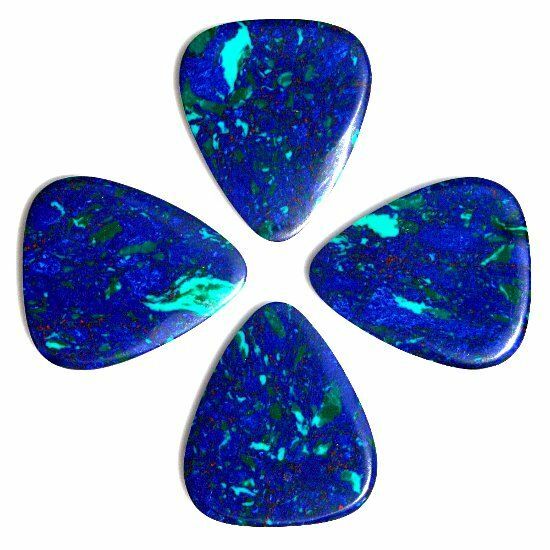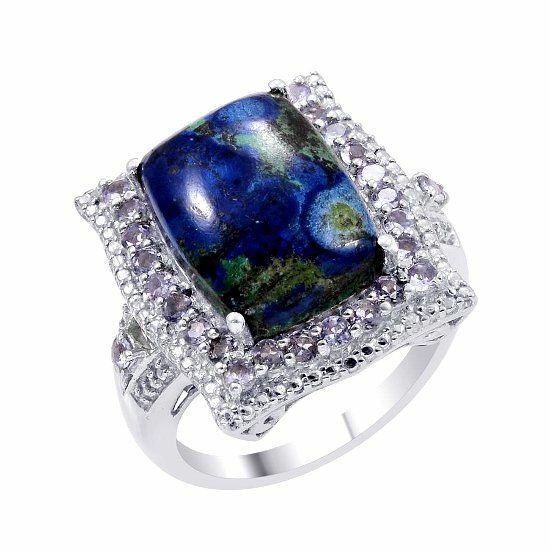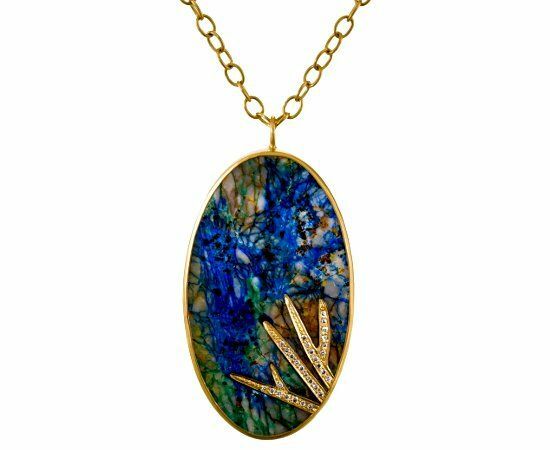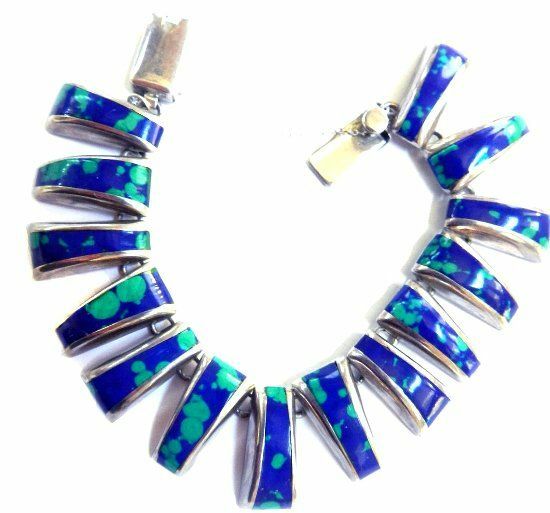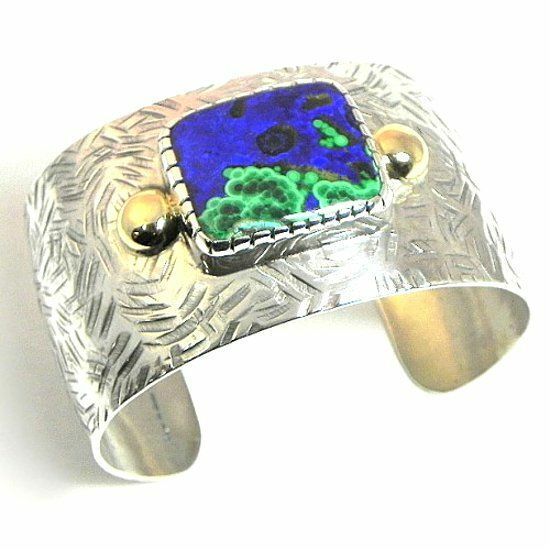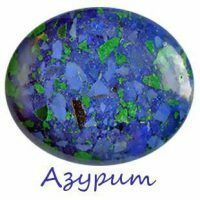
Azurite is a mysterious stone of shamans and druids, a muse of great artists and brilliant icon painters. Due to its unique properties and extraordinary sky-blue shades, the stone azurite is a dream of many collectors. Its crystal-clear blue-blue radiance shines through the ages the vaults of the Sistine Chapel.
- Stone Description
- Description of the mineral
- Azurite varieties
- Chemical composition and physical properties of the stone
- Azure deposits
- The healing properties of the mineral
- The magical properties of the azurite
- Azurite and the zodiac signs
- Application of the gem
- Interesting facts about the stone
- How to distinguish natural azurite from counterfeiting
- Stone Care
- Photos of the stone azurite and its products
History of the stone
- It is known that already in ancient times, a unique azurite withuzhil original material in jewelry.
- Due to its unique magical properties, the mineral was actively used in various spiritualistic sessions.
- Azurite enjoyed great popularity in ancient times, although it was often confused with lapis lazuli, which was of great value in the East. Even Aristotle himself did not distinguish between these gems in his works.
- In the Renaissance, the stone gained popularity among European painters. Masters made from the mineral a unique sky-blue paint. Thus, Michelangelo used the paint from the azurite while painting the arches of the Sistine Chapel. Among the connoisseurs of the mineral, we should also mention Raphael himself.
- Its name was given to the mineral only in 1824 thanks to the work of the mineralogical scientist Francois Bedan.
Description of mineral
Azurite is a type of copper ore, although it is not as valuable as malachite.
The name of the stone resembles the word "azur", which in French means "lazuli".And indeed, natural stone has a memorable exquisite saturated sky-blue color. Also, the mineral is remembered with a unique glass shine and perfectly smooth edges.
In addition to the usual name, the stone has many names. So, for example, the French call it in honor of the city of Shessi "sessile"( earlier this city was famous for the extraction of azurite).
Also a mineral called copper blue, copper azure, mountain blue, copper lapis, Armenian stone and armenite .
to table of contents ^Azurite varieties
In nature, pure azurite is extremely rare, usually a mineral coalesces with other minerals, forming unusual mixtures.
- Most often, azurite occurs in association with malachite. The growth of these minerals is called "azurmalachites".
- Occasionally, azurmalachite has cuprite impurities. This mixture is called "burnitom".
- A mixture of pure asurite with chrysocolla, people called blue copper.
Chemical composition and physical properties of the stone
The place of formation of the stone is the polymetallic and copper ores, where as a result of the oxidation of the primary minerals of copper, azurite is formed.
In its chemical composition, azurite is a copper carbonate with a content of hydroxyl anions.
Chemical formula: Cu3( CO3) 2( OH) 2.
Thanks to copper( Cu), the content of which in the mineral exceeds 55%, the stone has a celestial blue color.
In nature, the mineral forms small columnar crystals. Azurite is characterized by a shell( in the form of a shell) fracture and a glassy sheen of facets.
Azurite is a brittle stone, its Mohs hardness is 3.5-4 units, and the density is 3.5-4 g / cm3.
to contents ^Azurite deposits
Basically azurite is mined in Chile, Mexico, Australia( Queensland), USA( New Mexico and Arizona), France, Kazakhstan, Germany. There are deposits in Africa( Namibia, Zaire, Zambia), Morocco( Mibladen, Tuissit) and in the Southern Urals.
to contents ^The healing properties of the mineral
In addition to external beauty, azurite is famous for its medicinal properties. Mineral helps to fight with:
- melancholy;
- hysteria;
- hallucinations;
- epilepsy;
- disorders of the nervous system.
Modern lithotherapists say that decorations with azurite contribute to the treatment:
- hypertension;
- of eye diseases;
- infectious skin diseases;
- asthma.
Azurite is contraindicated to be worn for more than one month in a row;Excessive enthusiasm for azurite can lead to internal imbalances. The stone is best worn for no more than 3-4 days in a row, after which you should make a two-day break.
to contents ^Magic properties of azurite
loading. ..
Already in ancient times azurite became famous for its magical properties.
So, in Ancient Egypt the priests used azurite to communicate with the gods, while in Ireland the azurite helped the druids determine the life path of the youth.
The druids with the help of azurite subjected the young men to a certain ritual, during which he understood his life purpose.
In the East, azurite acts as a "third eye".It is believed that it helps to see what is hidden from the ordinary look.
In the modern world with the help of azurite get rid of negative emotions and relieve emotional arousal.
It is believed that the mineral helps:
- make the right decision;
- settle the conflict peacefully;
- reveal fraud;
- to expose ill-wishers;
- retain sunny optimism;
- to find spiritual purity and peace.
Azurite and zodiac signs
It should not be forgotten that azurite is a strong enough stone.
The most effective impact stone produces on people born under the sign of Libra.
Also Azurite is suitable for Virgo and Pisces.
But the owners of the azurite, who were born under the sign of Gemini, most likely, will feel its negative impact.
to contents ^Application of gem
Today, despite its fragility, azurite is used in many industries:
- Painting. Since ancient times, with the help of this mineral, a blue tempera paint was made, which artists subsequently used in painting the icons.
- Jewelcrafting. Because of its increased fragility, azurite is rarely used in the jewelry industry. But recently, original ornaments with azurite became popular - silver small grits of this mineral clad in silver mesh.
- Decorative art. Sometimes azurite is used as an inexpensive ornamental stone.
- Pyrotechnics. Azurite is part of some pyrotechnic products( for coloring fireworks in green).
- Collectibles. Due to the unusually rich blue color, azurite is a popular stone among collectors. Stuf( a crystal sample) of azurite is one of the most valuable and rare ornaments of many collections.
- Industry. Azurite is used to produce copper sulfate and copper smelting.
loading. ..
Interesting facts about the stone
- Some specimens of azurite impress with their dimensions, so, in 1980 in Tsumeb( Namibia) a mineral was found, the weight of which was 26 kg.
- In 1997, in the mine "Copper Queen"( Arizona) was found even more amazing stone, the mass of which is 4.5 tons. This is the largest specimen of Azurite in the history of its extraction. An unusual mineral was given the name "Singing Stone".Today, this azurite is stored in New York in the exhibition hall of the American Museum of Natural History.
- It is known that the icon painter Andrei Rublev used azurite to write the world famous "Trinity".
- Until the 17th century, azurite was actively used in painting, until it became known that under the long-term exposure to humidity and air, the mineral acquires an undesirable green tint.
- New South Wales( Australia) is known for its unusually beautiful azurites, whose height is 15 cm.
- Azurite is an inexpensive stone, the average price per gram is approximately $ 5.The largest and most valuable specimens are mined in Zaire.
- In Russia, the largest azurites( up to 5-6 cm in diameter) are mined at the old Ural mine of Gumeshka.
How to distinguish natural azurite from counterfeit
Azurite is rarely used as a jewelry raw material, usually a mineral serves as an ornament of private collections.
To distinguish natural stone from counterfeiting, it is necessary to remember:
- Under the long-term action of moisture and water, azurite has the property of turning into malachite, while acquiring a green tint.
- Quite rare azurite is of a purely blue color, usually in the mineral there are impurities of malachite.
- Natural stone is easy to distinguish from forgery, it is enough to place a small piece of mineral in hydrochloric acid - azurite is the only blue mineral that boils in it.
- Unlike other minerals, natural azurite is very fragile.
- In its structure, natural azurite has unique rings, strips and other ordered elements.
Caring for the stone
Azurite is rather fastidious in care.
- Do not forget, the prolonged influence of moisture and air adversely affects the stone, it often acquires a green tint.
- Azurite is fragile enough and requires special care, it must not be allowed to fall or strike.
- Azurite does not like water, so cleaning is best done with a dry soft cloth.
- To keep the original sky-blue color, the stone is best kept in a cool place, since the mineral does not like strong temperature changes.
- Avoid direct exposure to the stone of various chemicals and prolonged exposure to sunlight.
Photos of the stone of azurite and its products
